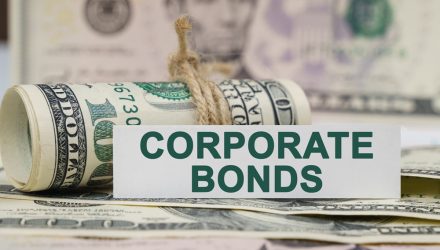With the capital markets expecting the U.S. Federal Reserve to pivot from its tight monetary policy in an effort to counter inflation, fixed income investors can continue to obtain yield from corporate bonds.
After a bearish run for bonds in 2022 and a flight to safety from aggressive rate hikes, investors are turning to corporate bonds again. The current environment presents an attractive option for fixed income investors looking to lock in on yields before the Fed shifts from its rate-hiking measures.
“We’re facing a ‘2016-like’ moment in bonds these days, meaning anyone who buys now has a shot at locking in 10%+ dividends for decades—and a shot at price upside, too,” wrote Michael Foster in Forbes. “I mention 2016 now because, back then, something truly unusual happened: interest rates on bonds jumped in a short period of time, driving the payouts on high-yield corporate bonds to nearly 10% at their peak (chart below).”
“As you can see above, anyone who bought a high-yield bond in 2016 locked in a 10% cash flow,” Foster added. “Many of these bonds continued paying out interest without a hitch, even through the pandemic, a time when yields spiked again, giving investors another chance to buy bonds at another huge interest rate.”
An Active Option
With a vast array of opportunities to dive into when it comes to the corporate bond pool, there’s an easier option via exchange-traded funds (ETFs), particularly those that incorporate an active management style. One fund worth considering is the American Century Diversified Corporate Bond ETF (KORP).
KORP offers yield while also adding diversification in holdings of mostly investment-grade quality. Per its fund description, it seeks current income by emphasizing investment-grade debt while dynamically allocating a portion of the portfolio to high yield.
Per its product website, KORP creates a systematically managed portfolio that integrates fundamental and quantitative expertise that:
- Adjusts investment-grade and high yield components to balance interest rate and credit risk.
- Screens individual credits to seek those with sound fundamentals, reduced default risk, attractive valuations, and liquidity.
- Adjusts industry and duration exposures as risks and opportunities emerge.
- Offers cost effectiveness with a relatively low 0.29% expense ratio.
- 30-day SEC yield of 5.09% and a 12-month distribution rate of 3.82% (both as of July 31)
- Average duration of debt holdings: 4.64 years (also as of July 31)
For more news, information, and strategy, visit the Core Strategies Channel.



